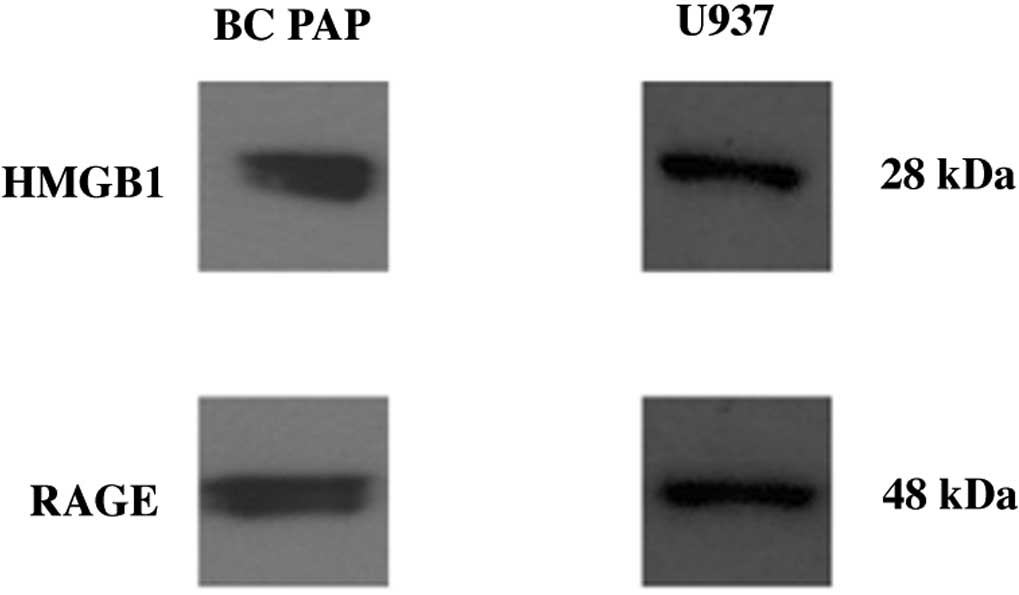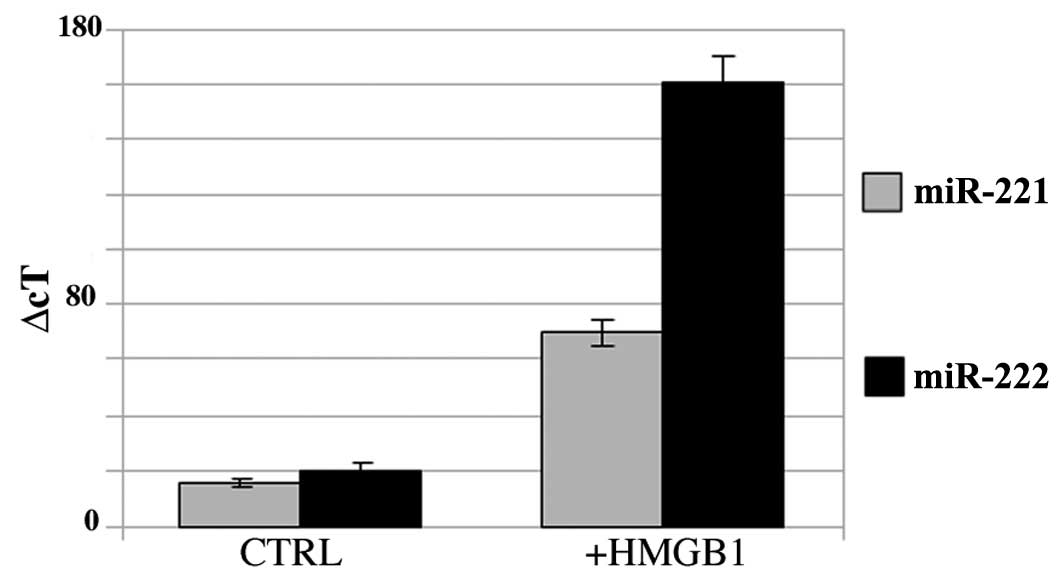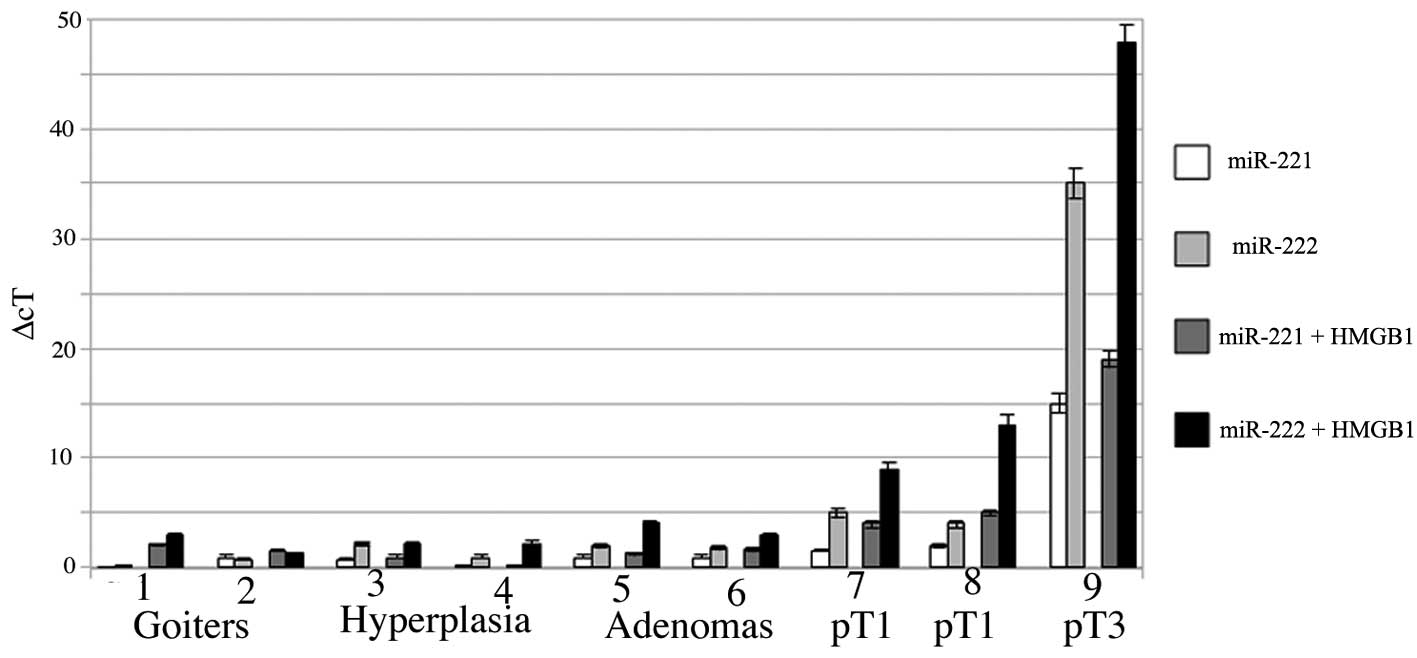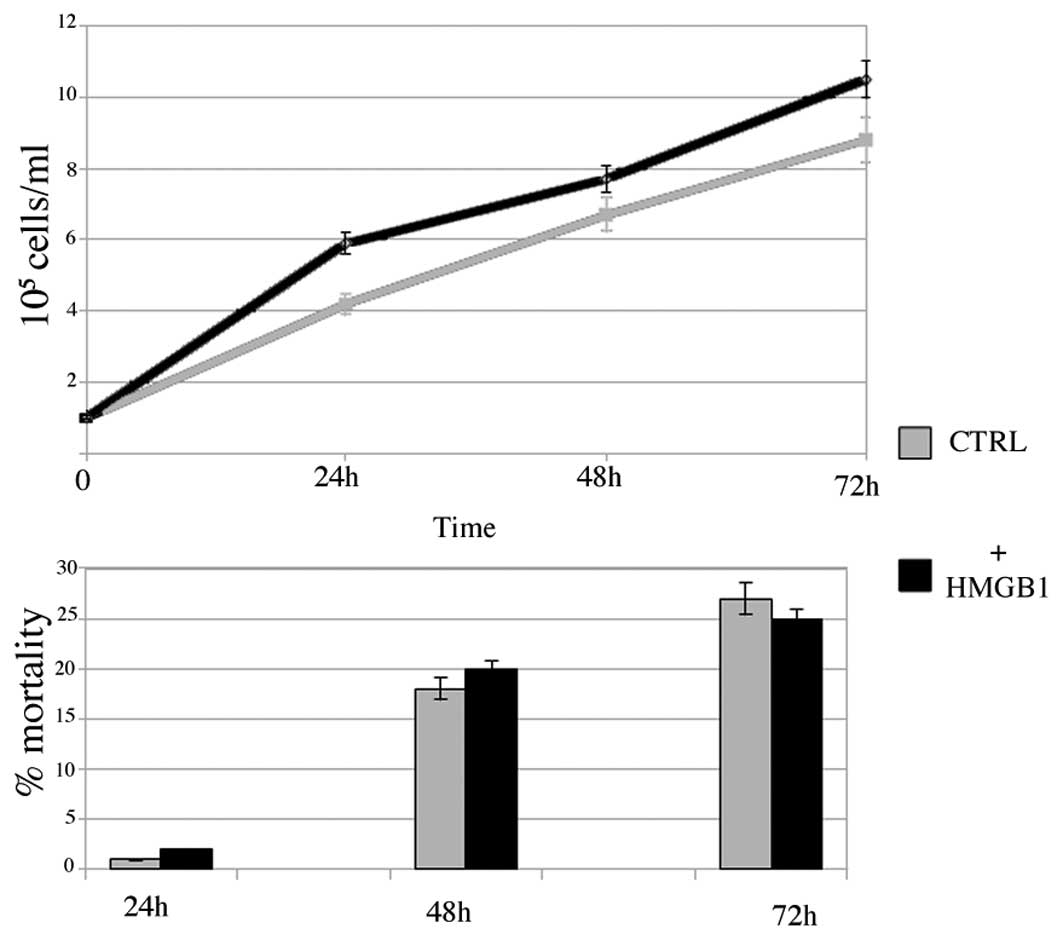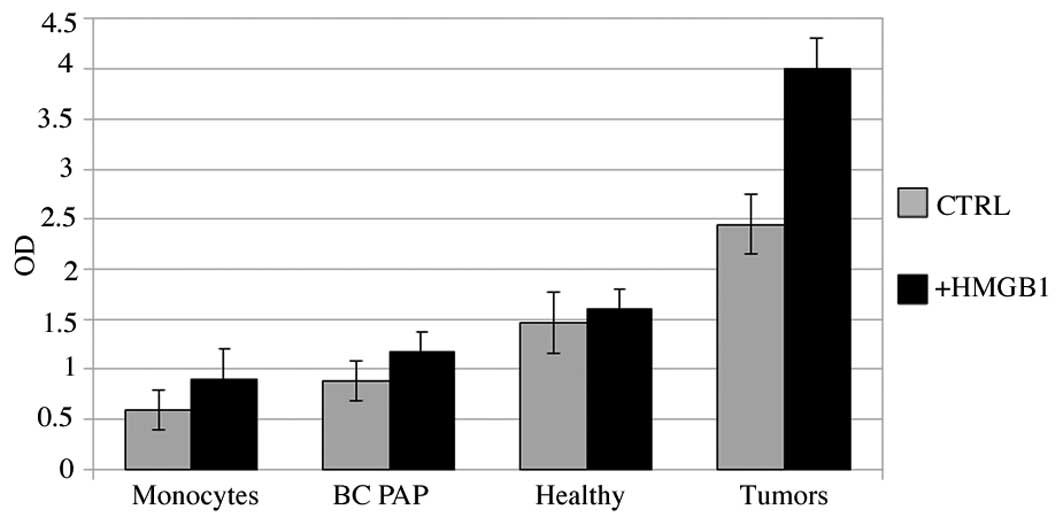|
1
|
Mardente S, Zicari A, Consorti F, Mari E,
Di Vito M, Leopizzi M, Della Rocca C and Antonaci A: Cross-talk
between NO and HMGB1 in limphocytic thyroiditis and papillary
thyroid cancer. Oncol Rep. 24:1455–1461. 2010. View Article : Google Scholar : PubMed/NCBI
|
|
2
|
Pikarsky E, Porat RM, Stein I, Abramovitch
R, Amit S, Kasem S, Gutkovich-Pyest E, Urieli-Shoval S, Galun E and
Ben-Neriah Y: NF-κB funtions as a tumor promoter in
inflammation-associated cancer. Nature. 431:261–266. 2004.
|
|
3
|
Mardente S, Lenti L, Lococo E, Consorti F,
Della Rocca C, Romeo S, Misasi R and Antonaci A: Phenotypic and
functional characterization of lymphocytes in autoimmune
thyroiditis and in papillary carcinoma. Anticancer Res.
25:2483–2488. 2005.PubMed/NCBI
|
|
4
|
Van Beijnum JR, Buurman WA and Griffioen
AW: Convergence and amplification of toll-like receptor (TLR) and
receptor for advanced glycation end products (RAGE) signaling
pathways via high mobility group B1 (HMGB1). Angiogenesis.
11:91–99. 2008.PubMed/NCBI
|
|
5
|
Galardi S, Mercatelli N, Farace MG and
Ciafrè SA: NF-κB and c-Jun induce the expression of the oncogenic
miR-221 and miR-222 in prostate carcinoma and glioblastoma cells.
Nucleic Acids Res. 39:3892–3902. 2011.
|
|
6
|
Palumbo R, De Marchis F, Pusterla T, Conti
A, Alessio M and Bianchi ME: Src family kinases are necessary for
cell migration induced by extracelllular HMGB1. J Neurooncol.
86:617–623. 2009.PubMed/NCBI
|
|
7
|
Toure F, Zahm JM, Garnotel R, Lambert E,
Bonnet N, Schmidt AM, Vitry F, Chanard J, Gillery P and Rieu P:
Receptor for advanced glycation end-products (RAGE) modulates
neutrophil adhesion and migration on glycoxidated extracellular
matrix. Biochem J. 416:255–261. 2008. View Article : Google Scholar : PubMed/NCBI
|
|
8
|
Kim JY, Park HK, Yoon JS, Kim SJ, Kim ES,
Ahn KS, Kim DS, Yoon SS, Kim BK and Lee YY: Advanced glycation end
product (AGE)-induced proliferation of HEL cells via receptor for
AGE-related signal pathways. Int J Oncol. 33:493–501.
2008.PubMed/NCBI
|
|
9
|
Maehama T and Dixon JE: PTEN: a tumour
suppressor that functions asa phospholipid phosphatase. Trends Cell
Biol. 9:125–128. 1999. View Article : Google Scholar : PubMed/NCBI
|
|
10
|
Si ML, Zhu S, Wu H, Wu F and Mo YY:
miR-21-mediated tumor growth. Oncogene. 26:2799–2803. 2007.
View Article : Google Scholar : PubMed/NCBI
|
|
11
|
Ma L, Teruya-Feldstein J and Weinberg RA:
Tumour invasion and metastasis initiated by microRNA-10b in breast
cancer. Nature. 449:682–688. 2007. View Article : Google Scholar : PubMed/NCBI
|
|
12
|
Bartel DP: MicroRNAs: target recognition
and regulatory functions. Cell. 136:215–233. 2009. View Article : Google Scholar : PubMed/NCBI
|
|
13
|
He H, Jazdzewski K, Li W, Liyanarachchi S,
Nagy R, Volinia S, Calin GA, Liu CG, Franssila K, Suster S, Kloos
RT, Croce CM and de la Chapelle A: The role of microRNA genes in
papillary thyroid carcinoma. Proc Natl Acad Sci USA. 102:1975–1980.
2005.
|
|
14
|
Visone R, Russo L, Pallante P, De Martino
I, Ferraro A, Leone V, Borbone E, Petrocca F, Alder H, Croce CM and
Fusco A: MicroRNAs (miR)-221 and miR-222, both overexpressed in
human thyroid papillary carcinomas, regulate p27Kip1
protein levels and cell cycle. Endocr Relat Cancer. 14:791–798.
2007. View Article : Google Scholar : PubMed/NCBI
|
|
15
|
Chun-Zhi Z, Lei H, An-Ling Z, Yan-Chao F,
Xiao Y, Guang-Xiu W, Zhi-Fan J, Pei-Yu P, Qing-Yu Z and Chun-Sheng
K: MicroRNA-221 and microRNA-222 regulate gastric carcinoma cell
proliferation and radioresistance by targeting PTEN. BMC Cancer.
10:3672010. View Article : Google Scholar : PubMed/NCBI
|
|
16
|
Fabien N, Fusco A, Santoro M, Barbier Y,
Dubois PM and Paulin C: Description of a human papillary thyroid
carcinoma cell line. Morphologic study and expression of tumoral
markers. Cancer. 15:2206–2212. 1994. View Article : Google Scholar
|
|
17
|
Hummel R, Hussey DJ and Haier J:
MicroRNAs: predictors and modifiers of chemo- and radiotherapy in
different tumour types. Eur J Cancer. 46:298–311. 2010. View Article : Google Scholar : PubMed/NCBI
|
|
18
|
Cully M, You H, Levine AJ and Mak TW:
Beyond PTEN mutations: the PI3K pathway as an integrator of
multiple inputs during tumorigenesis. Nat Rev Cancer. 6:184–192.
2006. View
Article : Google Scholar : PubMed/NCBI
|
|
19
|
Li Q, Li M, Wang YL, Fauzee NJ, Yang Y,
Pan J, Yang L and Lazar A: RNA interference of PARG could inhibit
the metastatic potency of colon carcinoma cells via PI3-kinase/Akt
pathway. Cell Physiol Biochem. 29:361–372. 2012. View Article : Google Scholar : PubMed/NCBI
|
|
20
|
Wong QW, Ching AK, Chan AW, Choy KW, To
KF, Lai PB and Wong N: MiR-222 overexpression confers cell
migratory advantages in hepatocellular carcinoma through enhancing
AKT signaling. Clin Cancer Res. 16:867–875. 2010. View Article : Google Scholar : PubMed/NCBI
|
|
21
|
Kato M, Putta S, Wang M, Yuan H, Lanting
L, Nair I, Gunn A, Nakagawa Y, Shimano H, Todorov I, Rossi JJ and
Natarajan R: TGF-beta activates Akt kinase through a
microRNA-dependent amplifying circuit targeting PTEN. Nat Cell
Biol. 11:881–889. 2009. View
Article : Google Scholar : PubMed/NCBI
|
|
22
|
Meng F, Henson R, Lang M, Wehbe H,
Maheshwari S, Mendell JT, Jiang J, Schmittgen TD and Patel T:
Involvement of human micro-RNA in growth and response to
chemotherapy in human cholangiocarcinoma cell lines.
Gastroenterology. 130:2113–2129. 2006. View Article : Google Scholar : PubMed/NCBI
|
|
23
|
Vincenti S, Brillante N, Lanza V, Bozzoni
I, Presutti C, Chiani F, Etna MP and Negri R: HUVEC respond to
radiation by inducing the expression of pro-angiogenic microRNAs.
Radiat Res. 175:535–546. 2011. View
Article : Google Scholar : PubMed/NCBI
|



